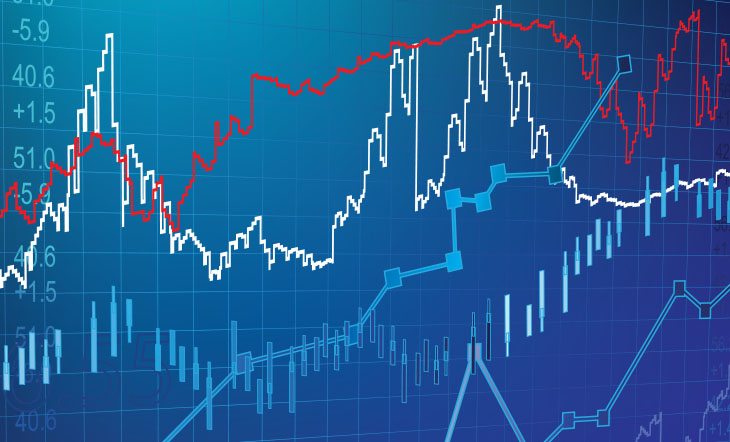With investor psychology recently swinging from fourth-quarter despair to New-Year optimism, we wanted to highlight that, despite the market recently moving higher, we believe that the higher volatility we became used to in 2018 is here to stay. In fact, our models currently suggest that the chance of a return to materially lower volatility—11 – 12% or less—is very low over the next few years.
Volatility Clustering
At Neuberger Berman, we utilize a volatility forecasting methodology as part of our risk parity strategies to help us more accurately balance risks across asset classes rather than using backward-looking measures or a simple market-based measure such as the CBOE Volatility Index (VIX).
In this edition of Systematically Speaking, we isolate a few key components of the S&P 500 volatility forecasting module from our risk parity strategy and show that, despite the fact that realized volatility and the VIX are now higher and intuitively present more downside risk than they did a year ago, our forecasting module suggests that volatility will remain relatively high. Moreover, our forecasting module puts the probability of a return to the sub-10% levels of 2017 outside the 90th percentile.
Our Model Indicates Many More Years of Elevated Volatility
NB model inferred S&P 500 Index volatility versus a market-based measure of volatility and realized volatility

Source: Bloomberg, Neuberger Berman. Forecasts may not materialize. Projections or other forward-looking statements regarding future events, targets or expectations are only current as of the date indicated. There is no assurance that such events or projections will occur, and may be significantly different than that shown here. See Additional Disclosures at the end of this material, which are an important part of this presentation.
Our modelling stems from the idea of “volatility clustering,” which is a fancy way of saying that large changes in prices tend to be followed by large changes, and small changes in prices tend to be followed by small changes. This may not be foreign language to fundamental investors, who would call this sort of behavior “herding”: market participants tend to do things similarly in the short run, while reverting back to the mean in the long run. As a result, the short run in financial markets is often characterized by all sorts of feedback loops that aggravate the magnitude of changes in either direction, making volatility predictable.
How predictable? The chart above shows the descriptive power of our model. The solid dark blue line shows how our model assessed the current level of volatility, between 2006 and 2018. You can see that it has closely followed the light blue line, which shows the realized volatility that we were able to observe, empirically and with hindsight, using a 52-week window and given a 26-week lead in the chart. The gray background shows the VIX level, derived from the prices of options maturing in one month’s time: you can see that this is a much less reliable description of current S&P 500 volatility than our model, due to the premia that traders price into options and other noise that makes its way into these markets.
Future Volatility
Given that our model has been successful historically in describing current volatility, it is interesting to use it to forecast future volatility.
To contrast our current view with a view from the past, we drew our volatility forecast at the end of 2017 (the gray dashed line), which was a time when the VIX had averaged approximately 10% for the 12 months and the realized, rolling 52-week volatility was 6.5%. That low-volatility environment was associated with the S&P 500’s winning streak of 12 consecutive months.
Back then, our model forecast a steady rise toward 14 – 15% volatility—basically, persistence of the low-volatility of 2017 with some mean reversion higher. Today, our model is forecasting volatility to persist around the current, higher levels, and to do so for at least the next two to three years (the blue dashed line). That is the “volatility clustering” effect in action.
In short, our model suggests that the recent return to more optimistic investor sentiment is unlikely to signal a return to materially lower market volatility. Based on our model, we believe that volatility is here to stay, and that asset allocators should monitor and manage portfolio risks accordingly.







